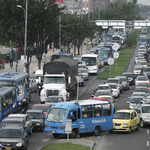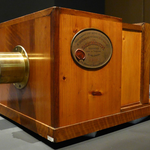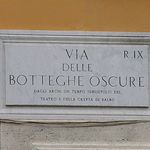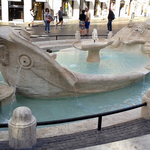Castel Sant'Angelo (Mausoleo di Adriano)
It is called Mole Adriana (Hadrianeum) that means Hadrian Mausoleum. The magnificent Roman monument of the compound structure is situated along the right bank of the Tevere in a commanding position.
It was the same emperor Hadrian which in 135 d.c. three years before dying wanted to have a new grave for him and his families as an alternative of the August mausoleum where there was no more space for burials. He designed the structure and ordered the construction of his tomb to architect Demetrian in the Domizia orchads on the Vatican hill. But it will be accomplished only in 139 by Antonino Pio. All the emperors from Hadrian to Caracalla were buried in the mausolem.
It consists of the large quadrangular base of 89 metres per one side and 15 metres high. On this base a cylindrical corpse of 64 metres in diameter and 21 metres high made of travertine and peperino mineral.
It was surmounted by the landgrave with funaral pints among a crown of statues.
And in the centre there was a statue of the Emperor representing the Sun that drove the bronze quadriga.
In 1000 Theodoric, king of the Visigoth fortified it and transformed it into a prison. Subsequently the Popes made here their stronghold using it as an emergency home and as a prison.
His name derives, according to the legend, from the apparition of the Archangel Michael on the top of the mass that sheathed a sword. It is on August 29 of 590 that the pope Saint Gregory "Gregory the Great" arranged a big and solemn procession to get rid of the plague during which Angelo's vision had place. It was a sign that the epidemic of the plague would soon cease.
Since that day the mausoleum was called Castel Sant'Angelo and on its top an angel of wood was placed. The rains spoilt the angel which was replaced with a marble one but it fell into pieces, the third one got
struck by the lightning and the fourth one of bronze got fused in 1527 for to make guns. The fifth one of marble was removed and placed in the courtyard of "balls" where nowadays it is replaced by the current one of bronze which was carved by the Flemish Werschaffelt in 1753.
Later it became a castle and was known as a residence of Alberico and Marozia. It was called then torre dei Crescenzi (tower of the Crescenzi).
Later it was restored in 1277 by Nicolò III and it risked to be demolished by the Romans following Urban VI, during the Western Schism.
Beginning from 1500 all the popes of the Renaissance passed here: Leon X made here construct a rudimentary lift. Clement VII ordered to build here a bathroom and a stove.
Several Popes strenghthened its military function and arranged the internal area in a luxurious manner. During the Renaissance its appartments were decorated and it was strengthened so that in 1527 it could be the basis of the papal power in Rome to defend the town against besieges and to serve as a refuge place and prison.
It was linked to Vatican through the "passageway" ("passetto").
On December 13 of 1347 Cola di Rienzo took refuge here to his first fall. In 1527 Clement VII was closed up here to escape from the army of Carlo V who was sacking the town.
Many murderers stayed here and among them Cellini in 1528, the Cencis, Giordano Bruno and Cagliostro in 700 were remembered here.
In the end of XVIII century after the French occupation it wasn't any more papal residence but the barracks and a prison.
During the Risorgimento the castle became a political prison. With the coming of the Italian government it was transformed into barracks and prison until 1901.
Afterwards by the initiative of the general Mariano Borgatti the changes were begun here and after the restoration the prison was transformed into a museum of Italian arms. (The National Museum of Castel Sant'Angelo).
The Sant'Angelo bridge lying in front links the ancient Elio bridge built by Hadrian (133-34) to the city. It became a fixed passageway for piligrims heading to San Pietro which, during the Jubilee in 1450 caused the collapse of the parpet.
The statues of the Angels on the bridge ordered by pope Clement IX were designed by Bernini in 1669. Benedetto XIV (1740-58) made it crown with a statue of the Angel.

 The records of Rome. Big numbers, not always enviable, for a big city.
The records of Rome. Big numbers, not always enviable, for a big city. New Phot-O-Matic section. To spend some time looking at photos (also) of Rome.
New Phot-O-Matic section. To spend some time looking at photos (also) of Rome. The administrative, urban, toponymic and imaginative subdivisions of Rome.
The administrative, urban, toponymic and imaginative subdivisions of Rome. Notice for tourists: in Rome you drink for free. Historical fountains and 'big noses'.
Notice for tourists: in Rome you drink for free. Historical fountains and 'big noses'. Free museums return on the first Sunday of the month.
Free museums return on the first Sunday of the month.